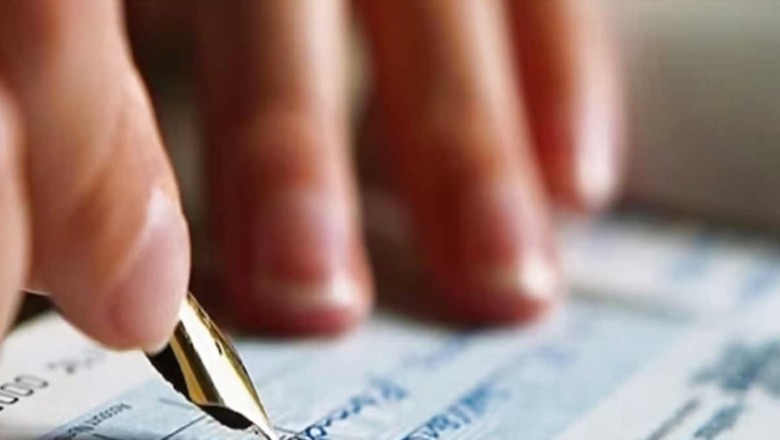
views
A cheque is one of the most widely used financial transaction instruments which is used all around the world. You can send and get money without any physical transfer of cash. It can be used by any individual, organisation or government for the transaction of different values. Whenever payment is made by cheque, the name of the recipient, bank details and the amount to be transferred are given and signed.
In several cheques, you must have seen it crossed with two parallel lines. These are either drawn across the whole cheque or at the top left-handed corner. Have you ever wondered what it signifies?
According to section 123 of the Negotiable Instruments Act 1881, the person issuing the cheque tells the bank that it is a crossed cheque by drawing two lines on the left corner of the cheque. It signals to the bank with two lines on the left corner that it’s a crossed cheque. You cannot walk into the bank and withdraw cash after depositing the cheque. The crossed cheques ensure that the financial institutions deposit the funds into an existing bank account.
This payment can be made to the person whose name is written on the cheque. Apart from this, the owner of the cheque can also endorse the cheque to someone, but for this, it becomes necessary for him to sign on the back of the cheque. There are many types of cross-cheques.
General Crossing
The first is general crossing, in which two lines are drawn on the edge of the cheque. It instructs the bank to deposit the funds in his bank accounts. It is the most commonly used crossed cheques.
Special Crossing
Special Crossing is done when the person issuing the cheque wants the money to be paid should go to his particular bank account only. If the payee has multiple bank accounts, the drawer can specify the bank by writing its name between the lines at the bottom of the cheque.
Account Payee Crossing
If Account Payee (A/C Payee) is written between the crossing lines in the cheque, it means that only the person whose name is written on the cheque can withdraw money from his account. No other person can cash an account payee cheque.
















Comments
0 comment